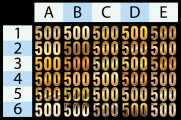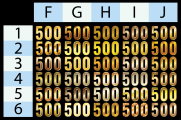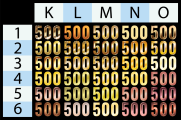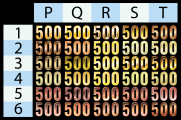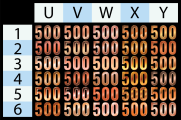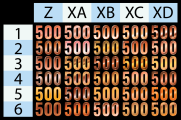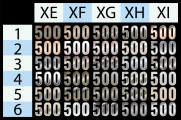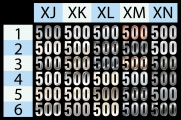Bozz
Waiting List
Hello everyone! After searching through the forum for insights, there did not appear to be a 'direct' discussion about gradients in chip design. I figured this might be a good spot to post designs where gradients were used successfully, or in ways that produced a more unique design. Or perhaps discussing good color combinations? Any of it!
The overarching reason for this is to assist my design process for a tournament set that is a bit more dramatic and showy, and my headspace is leaning towards mimicking metals / metallics (ex. Gold, Silver, or Bronze). I've seen some examples of this during my search, but if you have a particular design you've liked (labels/ceramics/etc) - post them here and lets talk about what makes them work well.
To kick things off, here's 240 metallic gradient denoms.
The overarching reason for this is to assist my design process for a tournament set that is a bit more dramatic and showy, and my headspace is leaning towards mimicking metals / metallics (ex. Gold, Silver, or Bronze). I've seen some examples of this during my search, but if you have a particular design you've liked (labels/ceramics/etc) - post them here and lets talk about what makes them work well.
To kick things off, here's 240 metallic gradient denoms.

